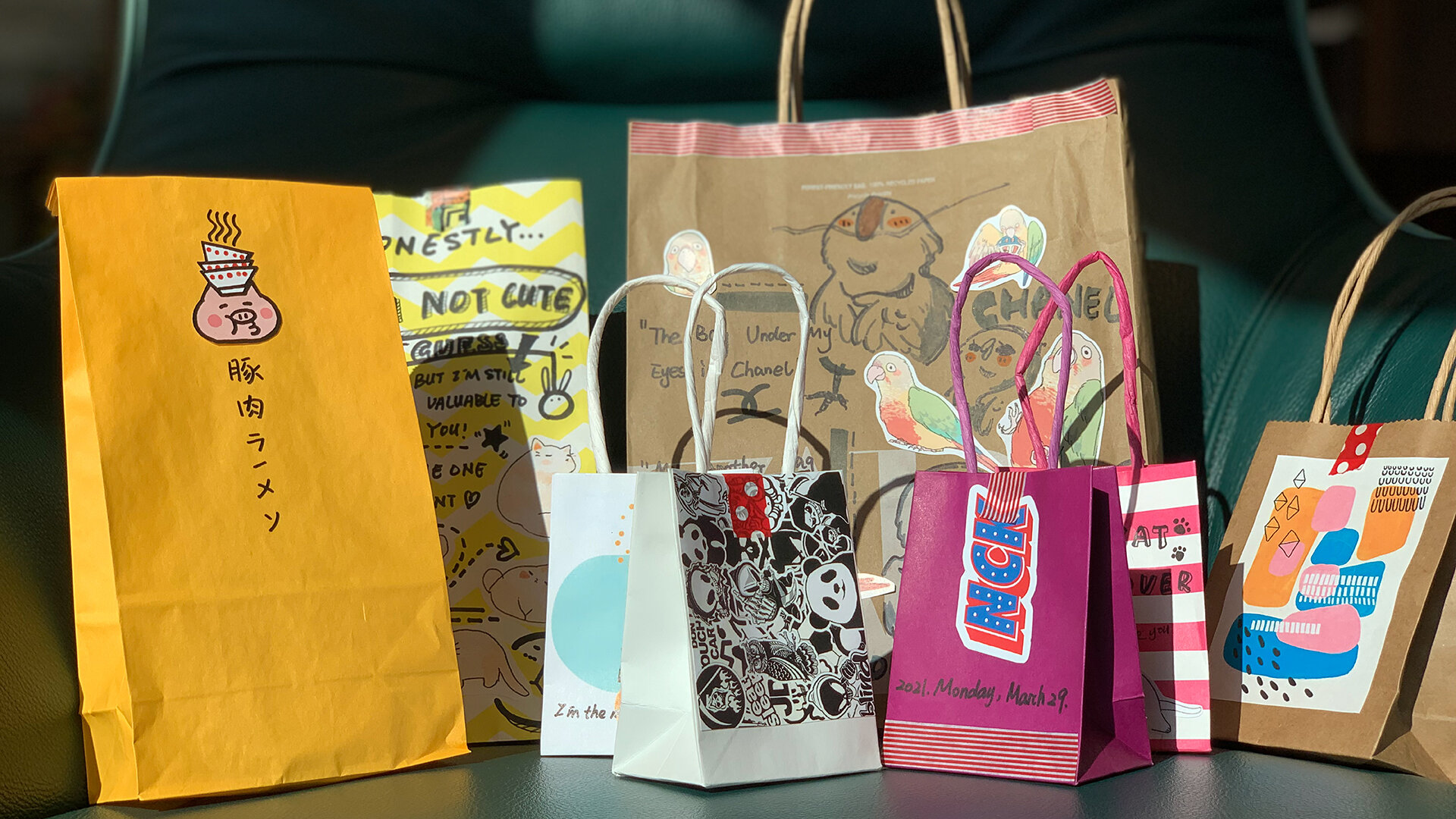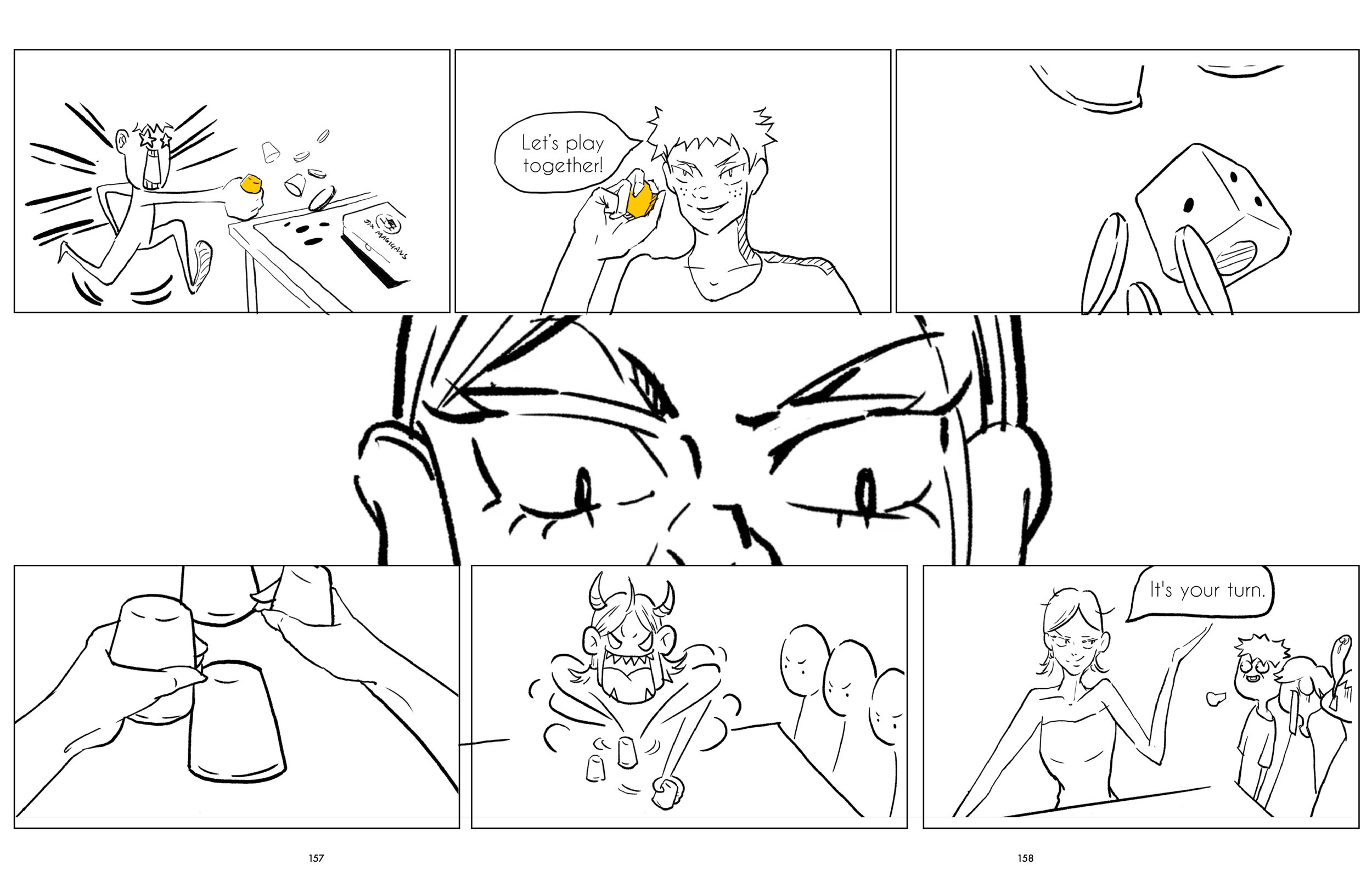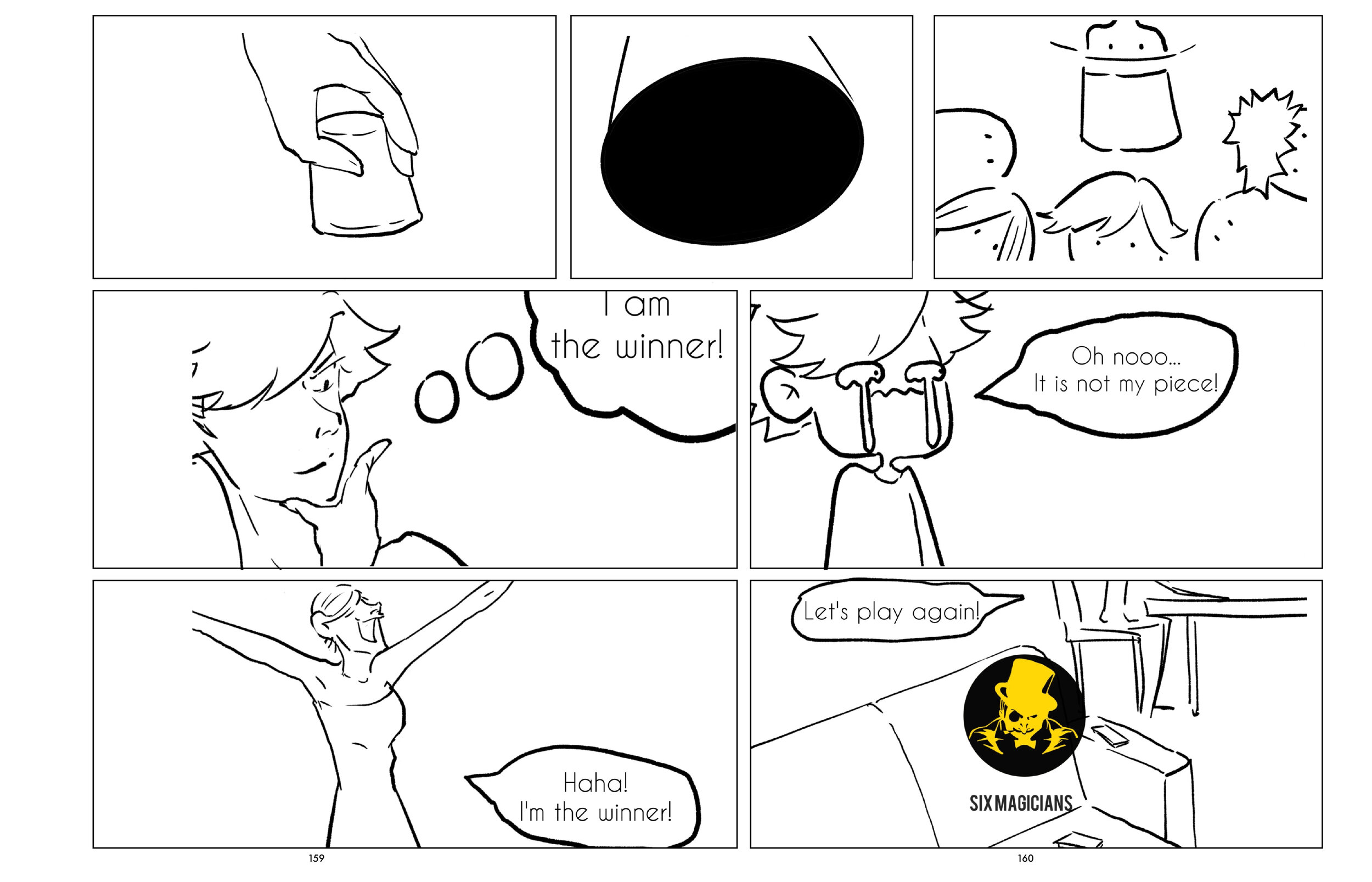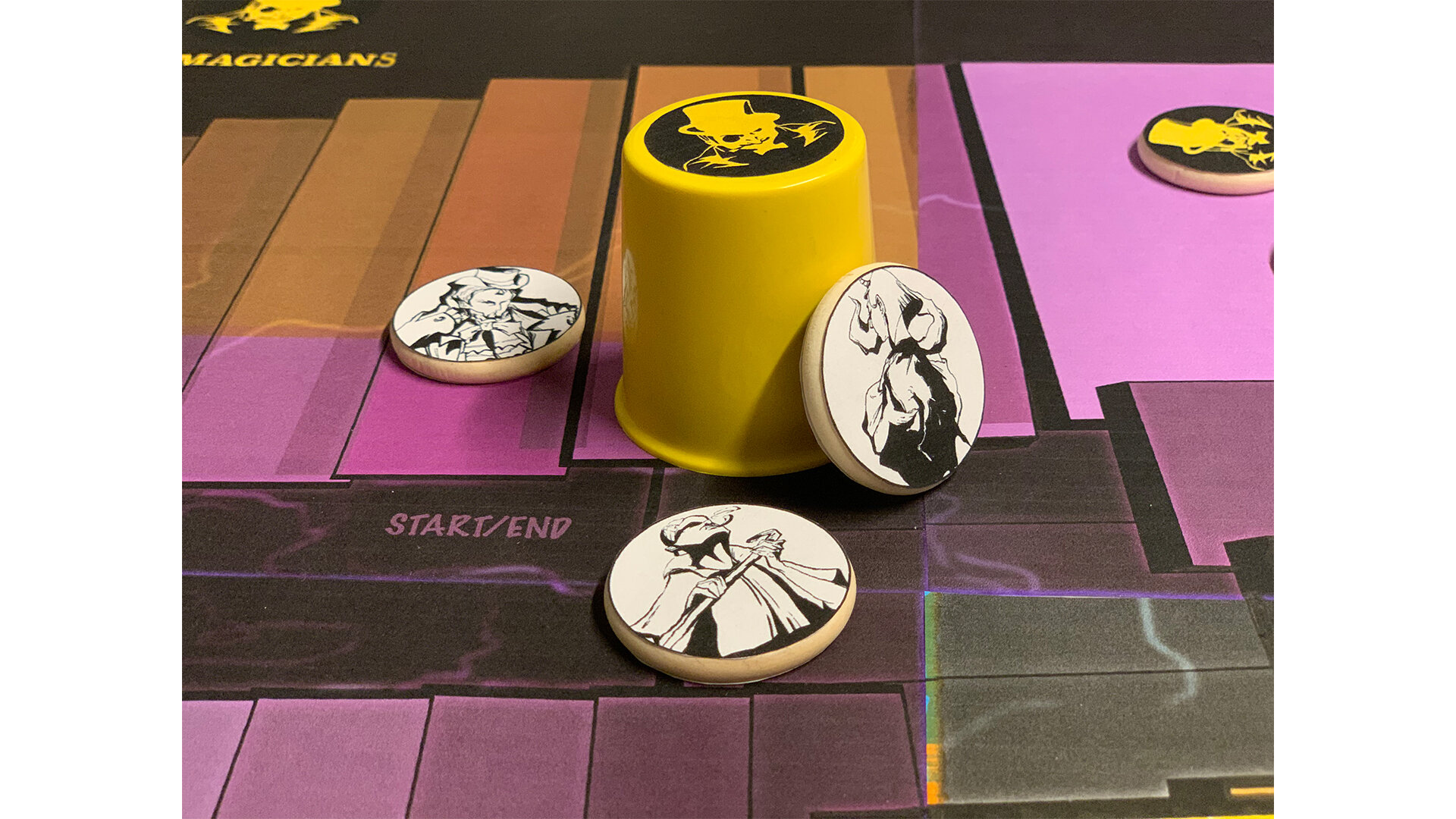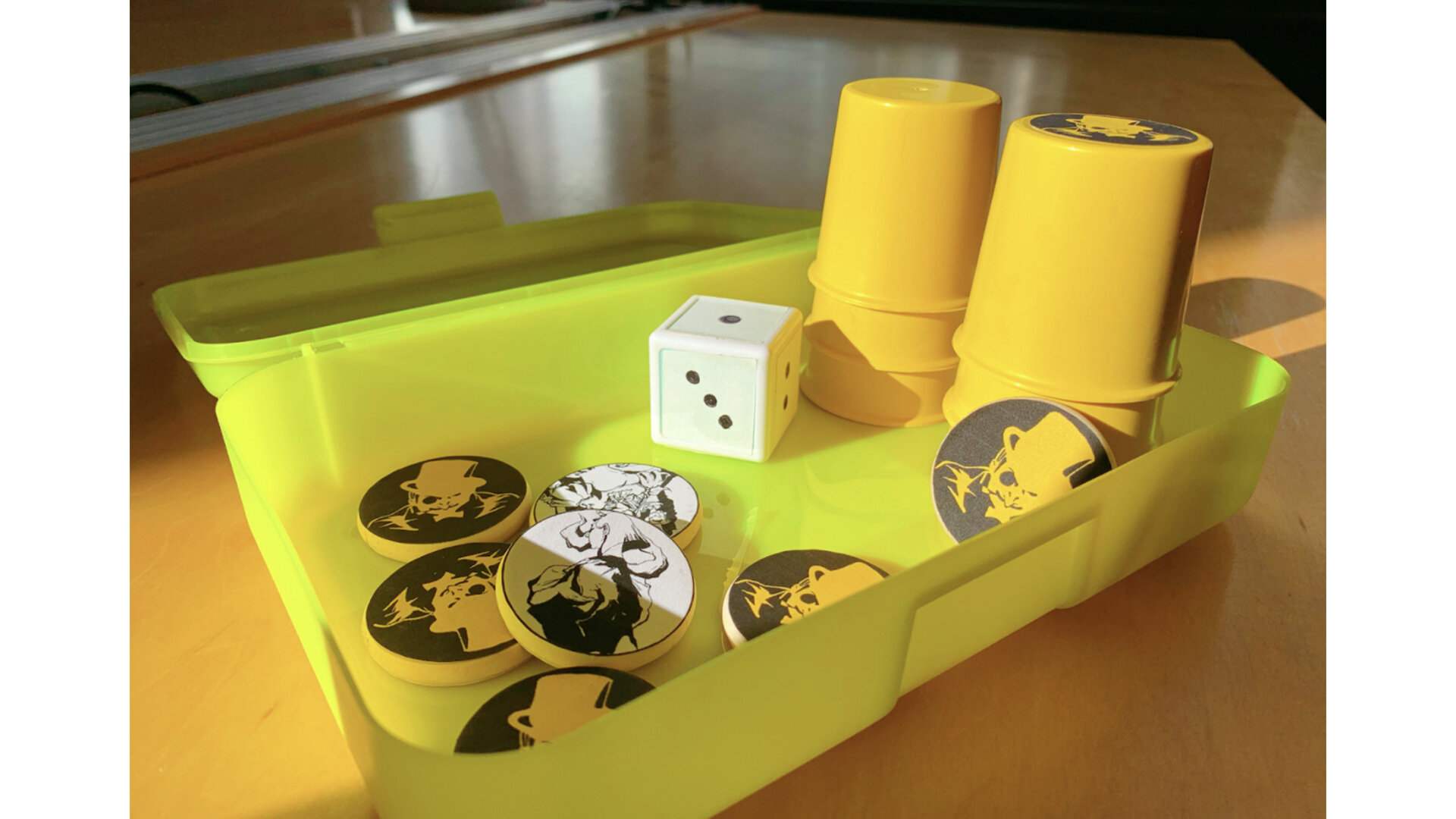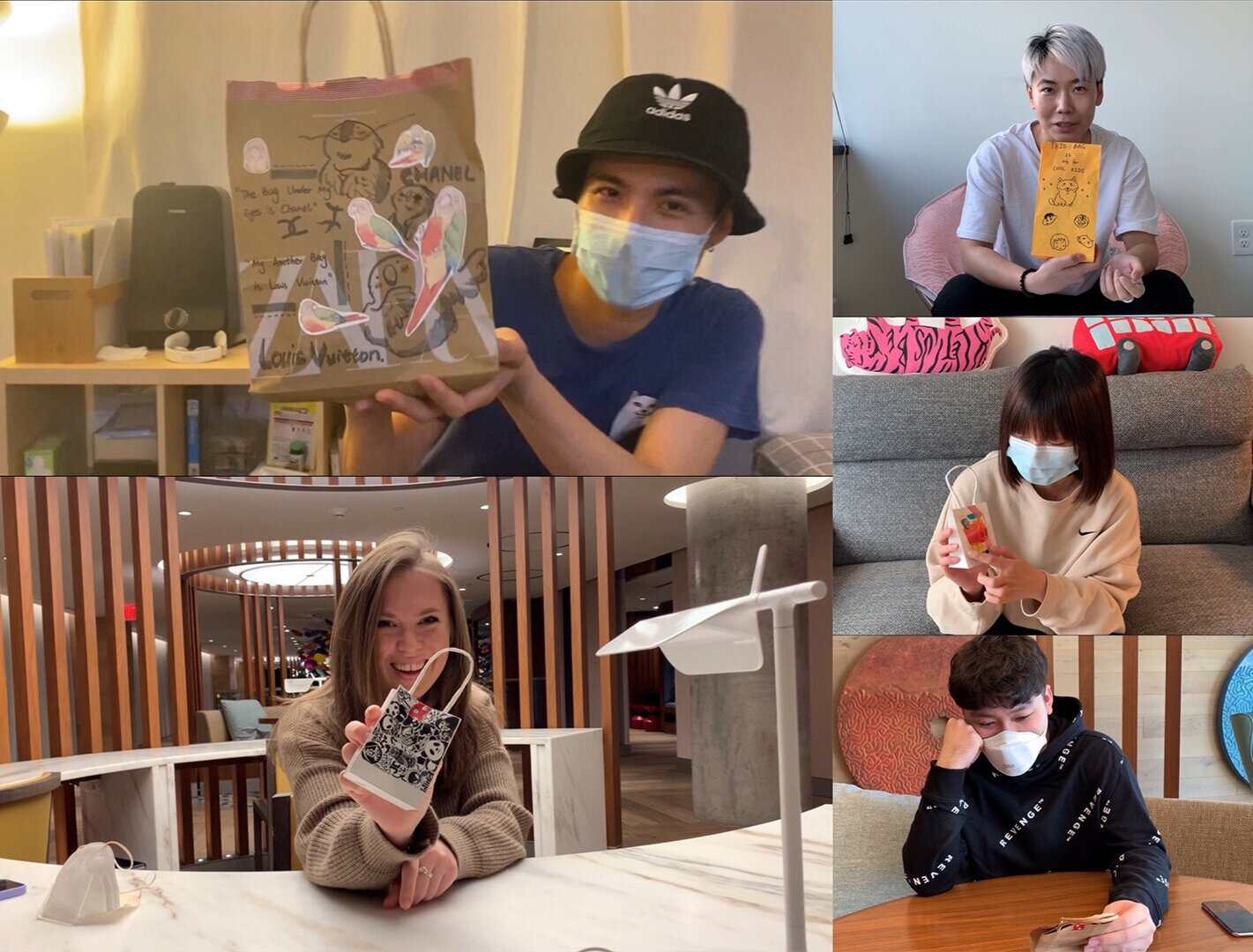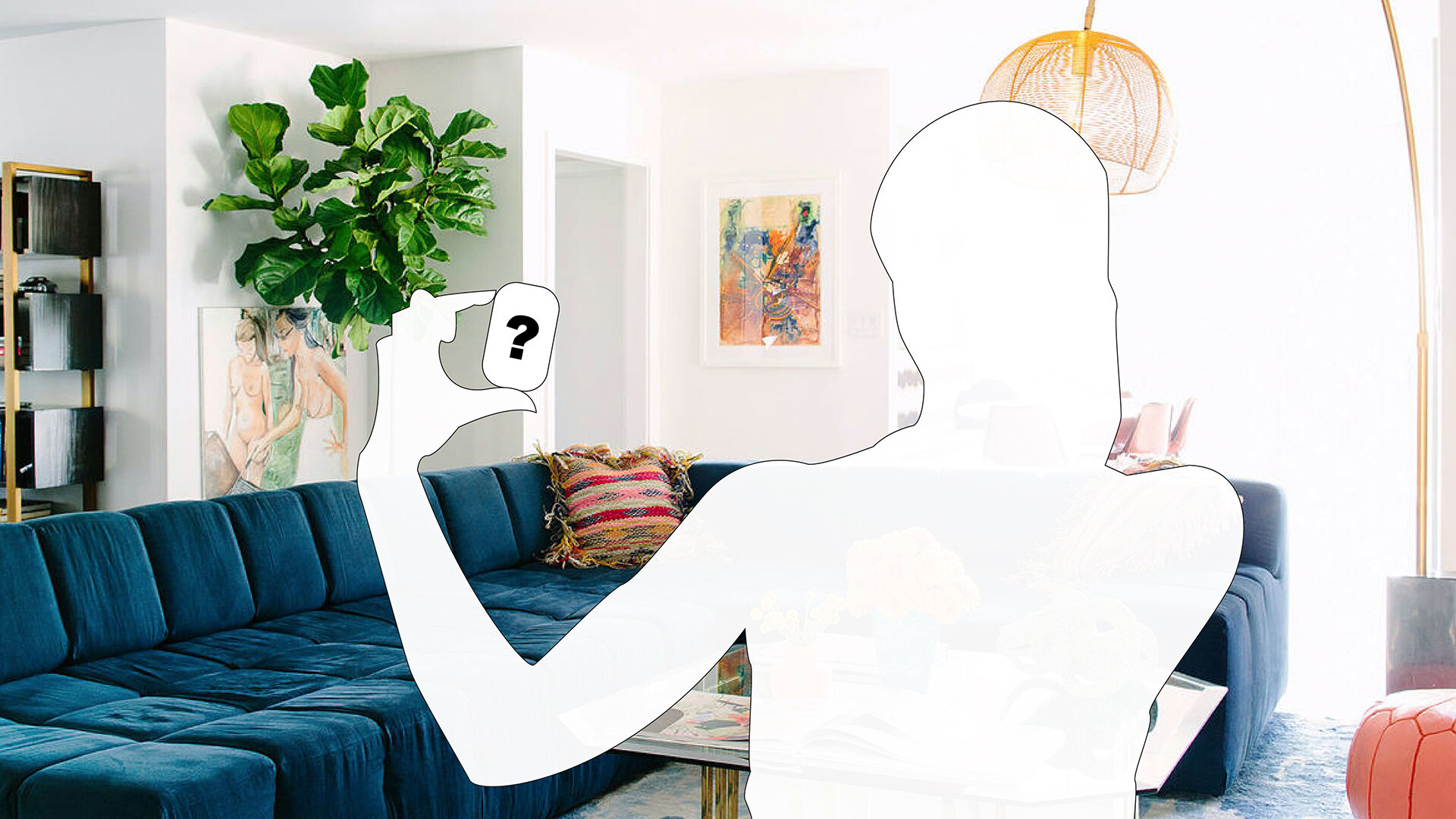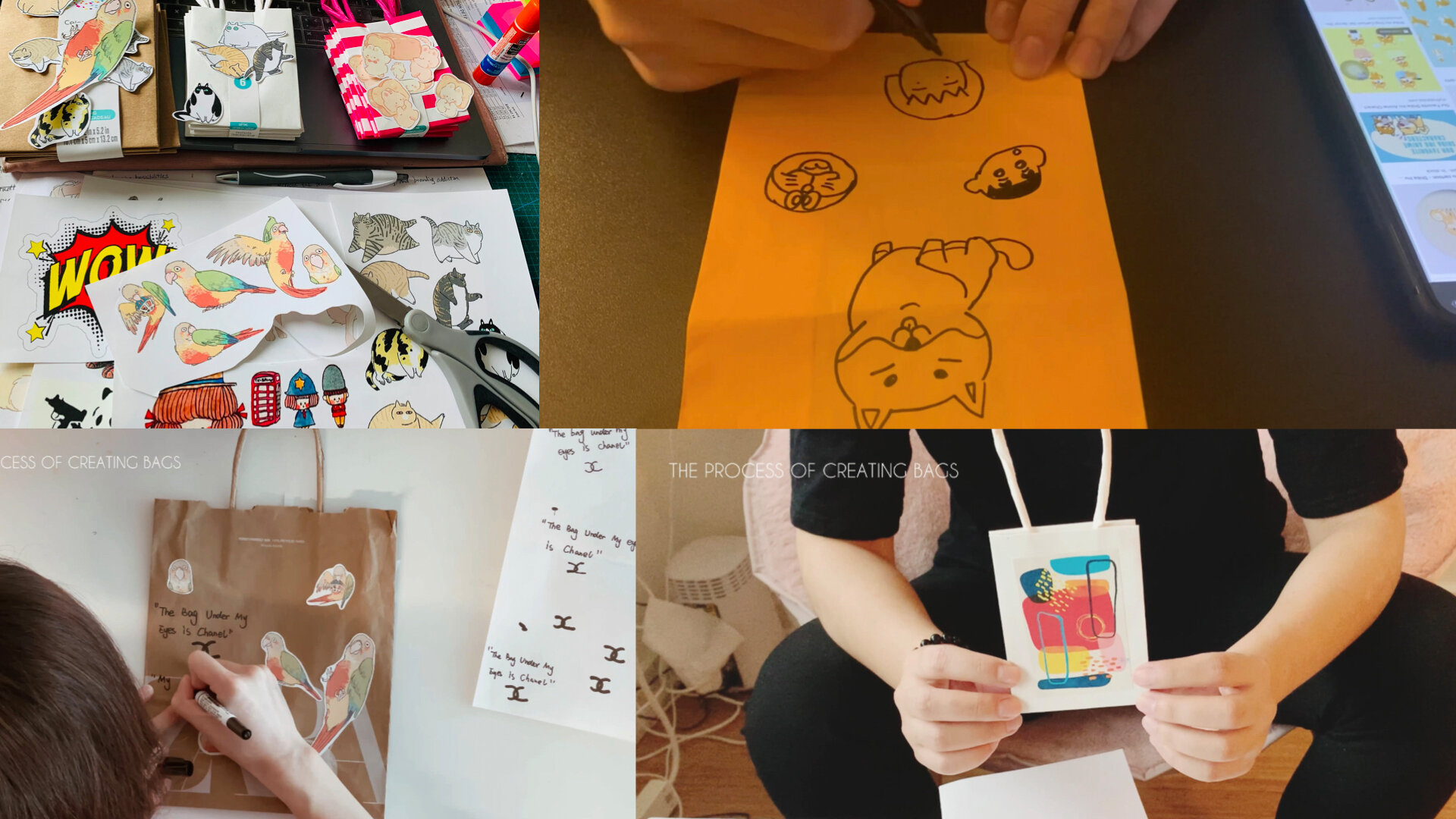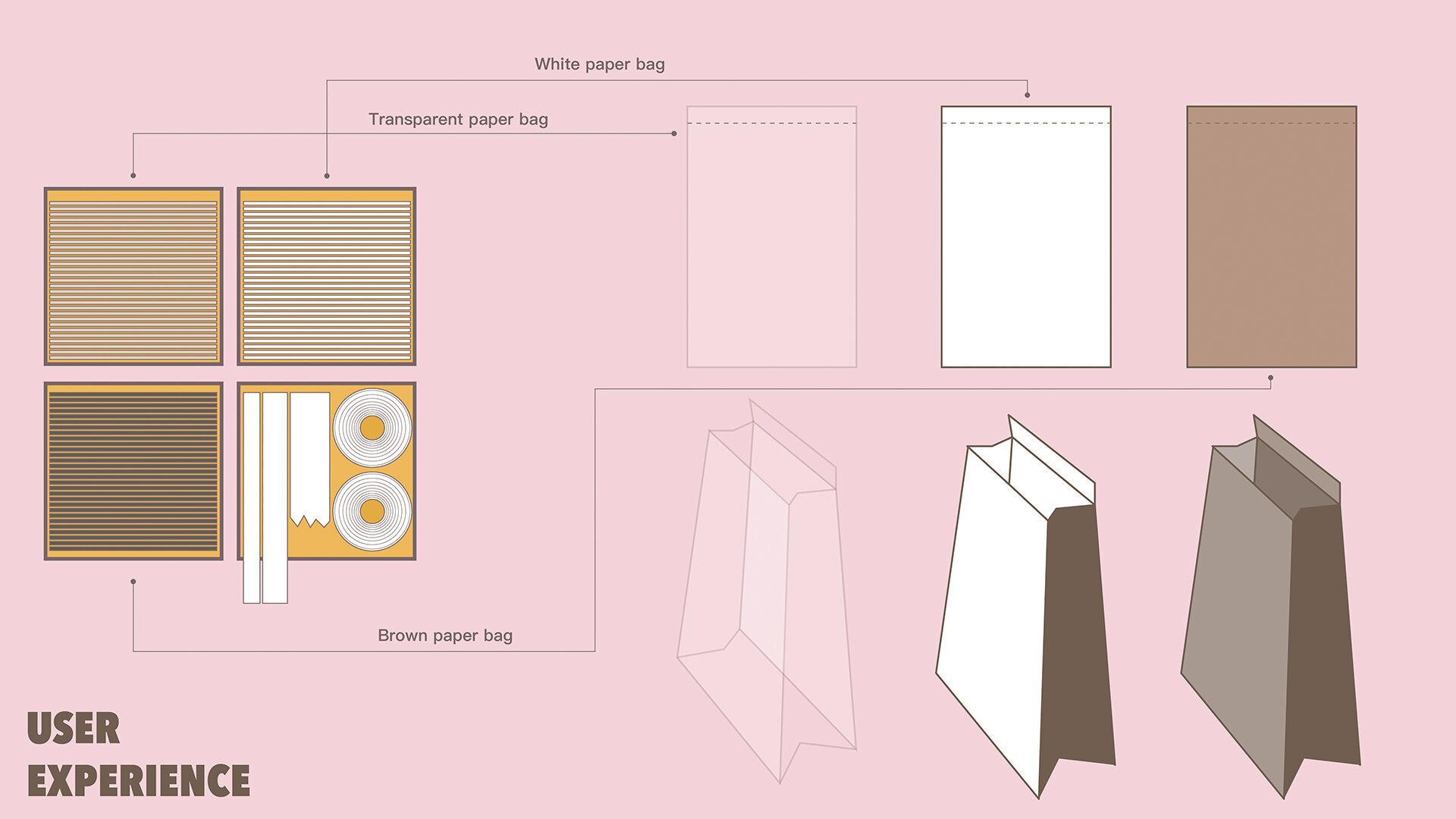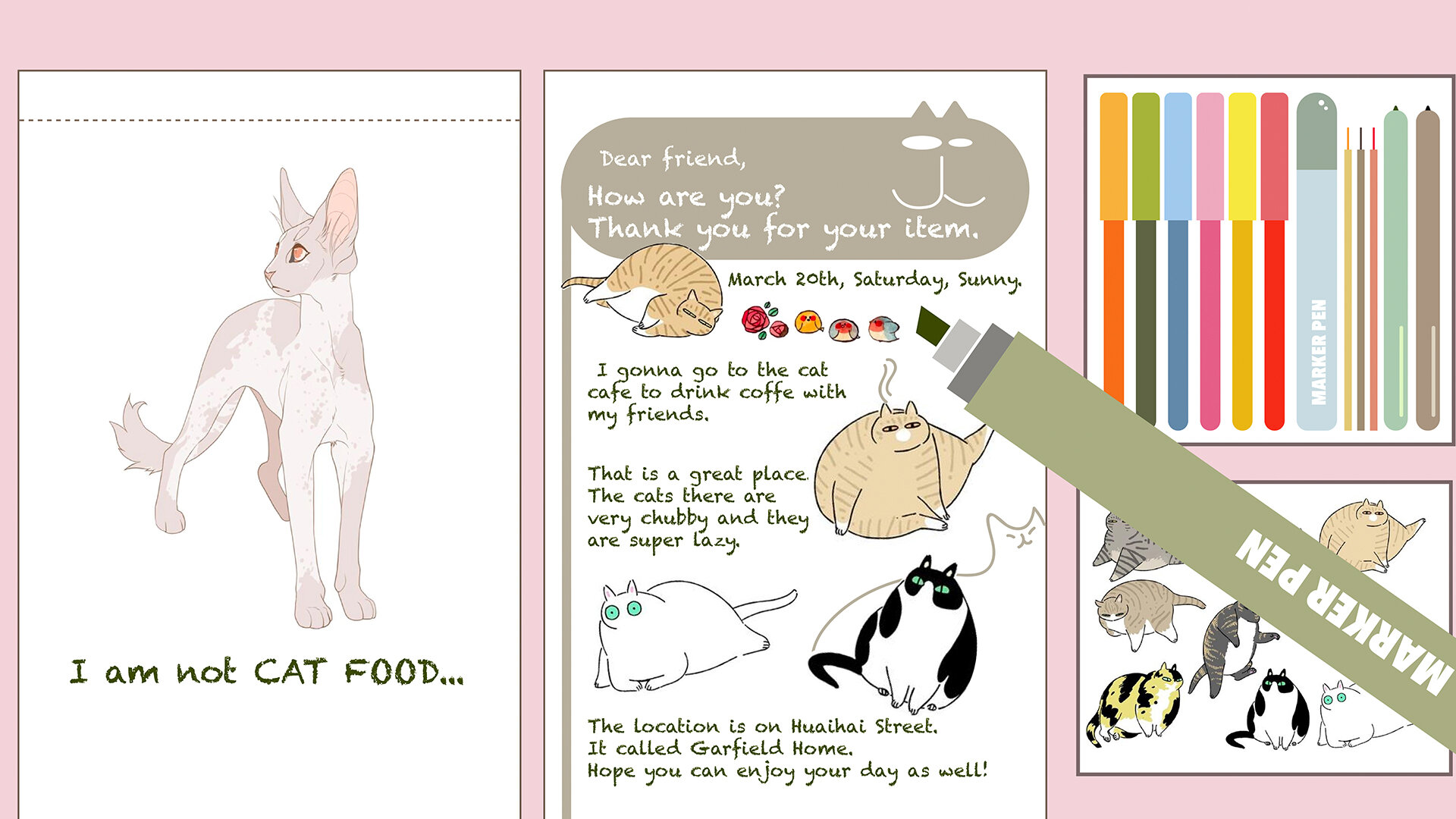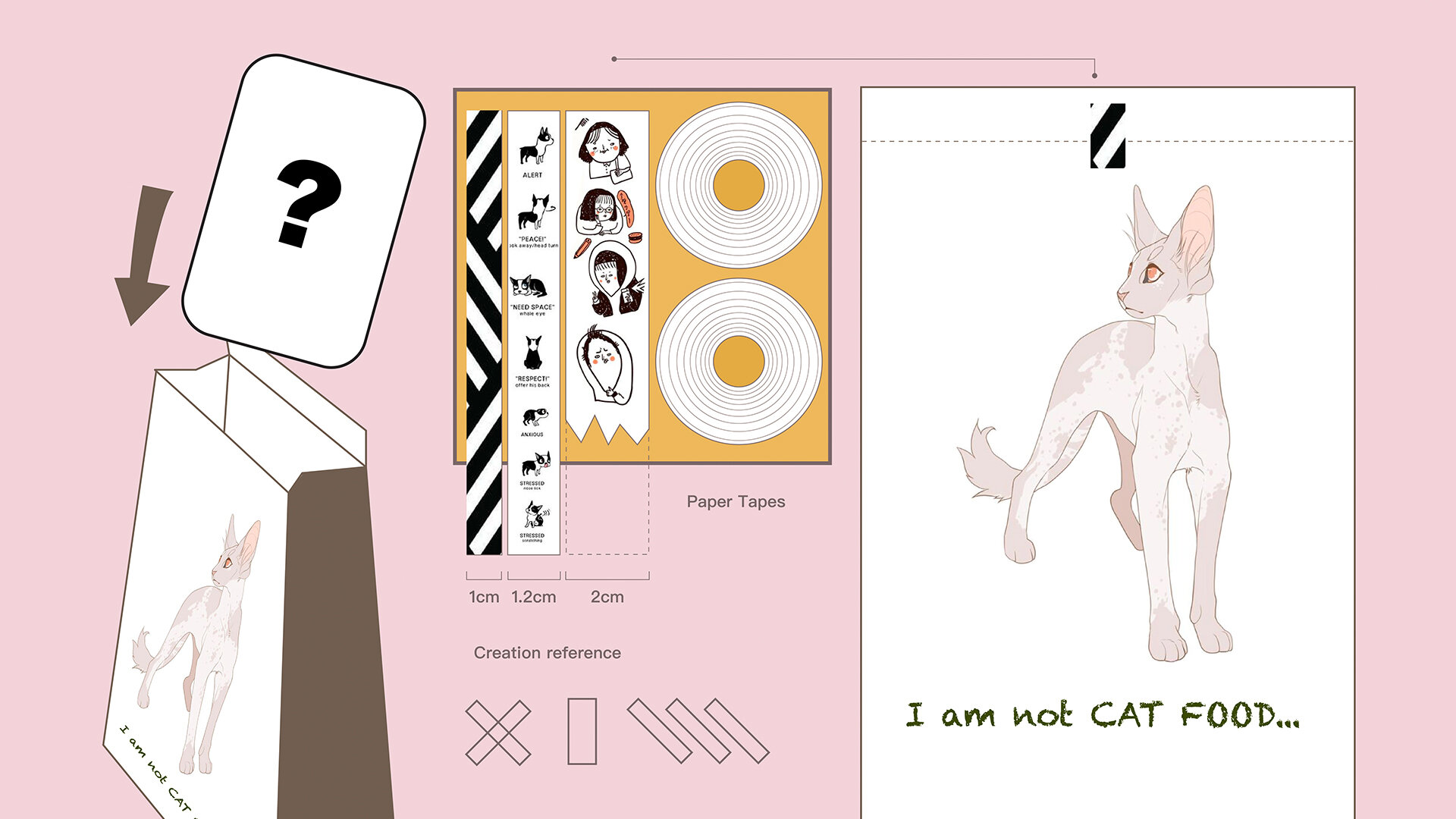Buying Possibilities: The Double Edge of Blind Box Culture
In Shuyi Wang’s thesis, Buying Possibilities: The Double Edge of Blind Box Culture, she explains that "Blind Box'' is not a new concept; it is a popular buying mechanism in which users make a purchase without knowing what they have bought—at least, not until after they’ve opened it. The positive mechanism of the blind box is its ability to surprise people with the unexpectable. The negative is its ability to make users addicted and trigger impulsive behavior.
Shuyi expands her thesis to include the social impact of the smartphone as a virtual blind box. Through her designs, she seeks to utilize the blind box’s positive mechanism to motivate and inspire children, and to help people disconnect from their phones in order to better focus and socialize. Her goal is to combat the pitfalls of the blind box’s negative mechanism by revaluing items and reintroducing the joy of surprise, thereby reinvigorating the beauty and power of real-life interpersonal connections.
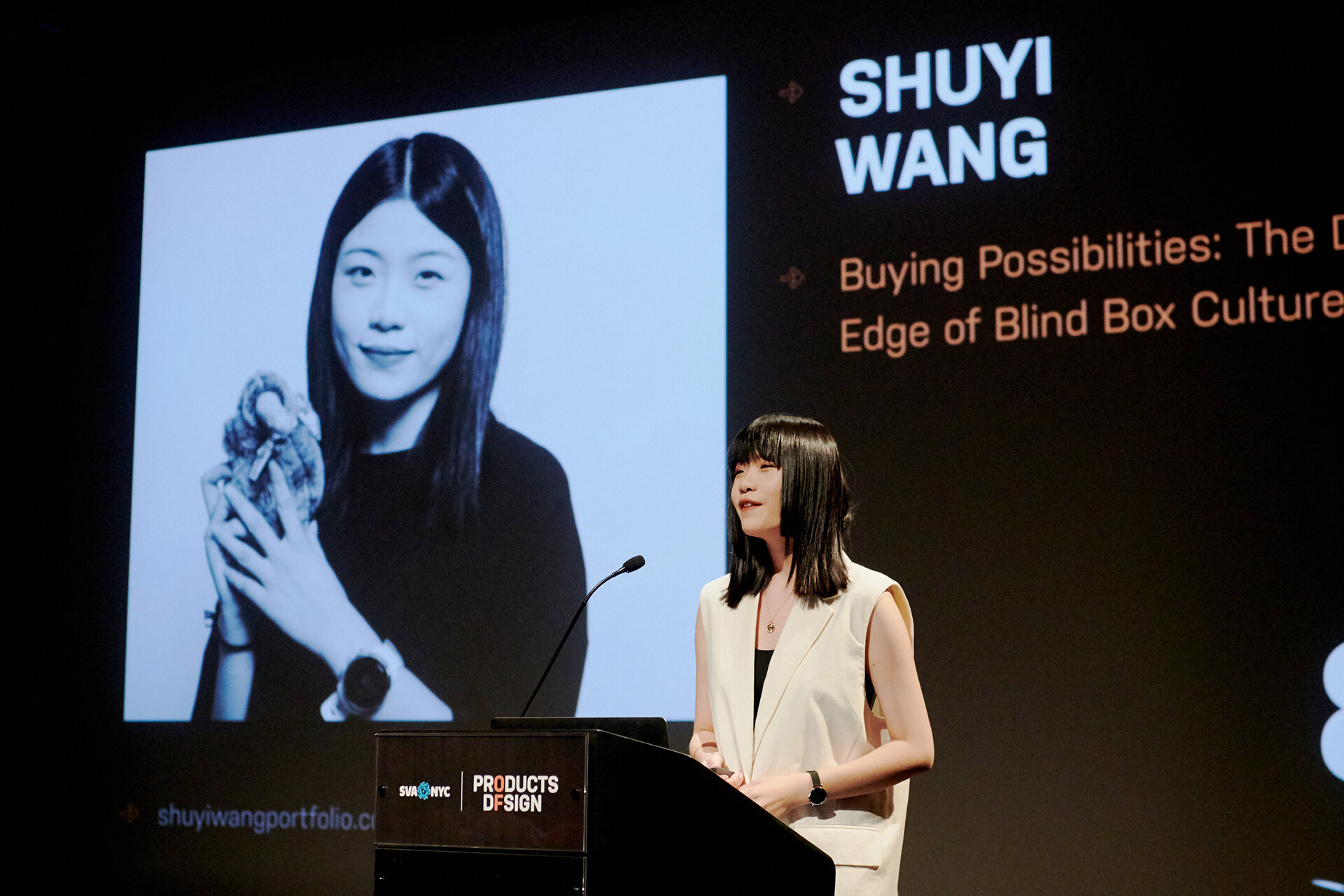
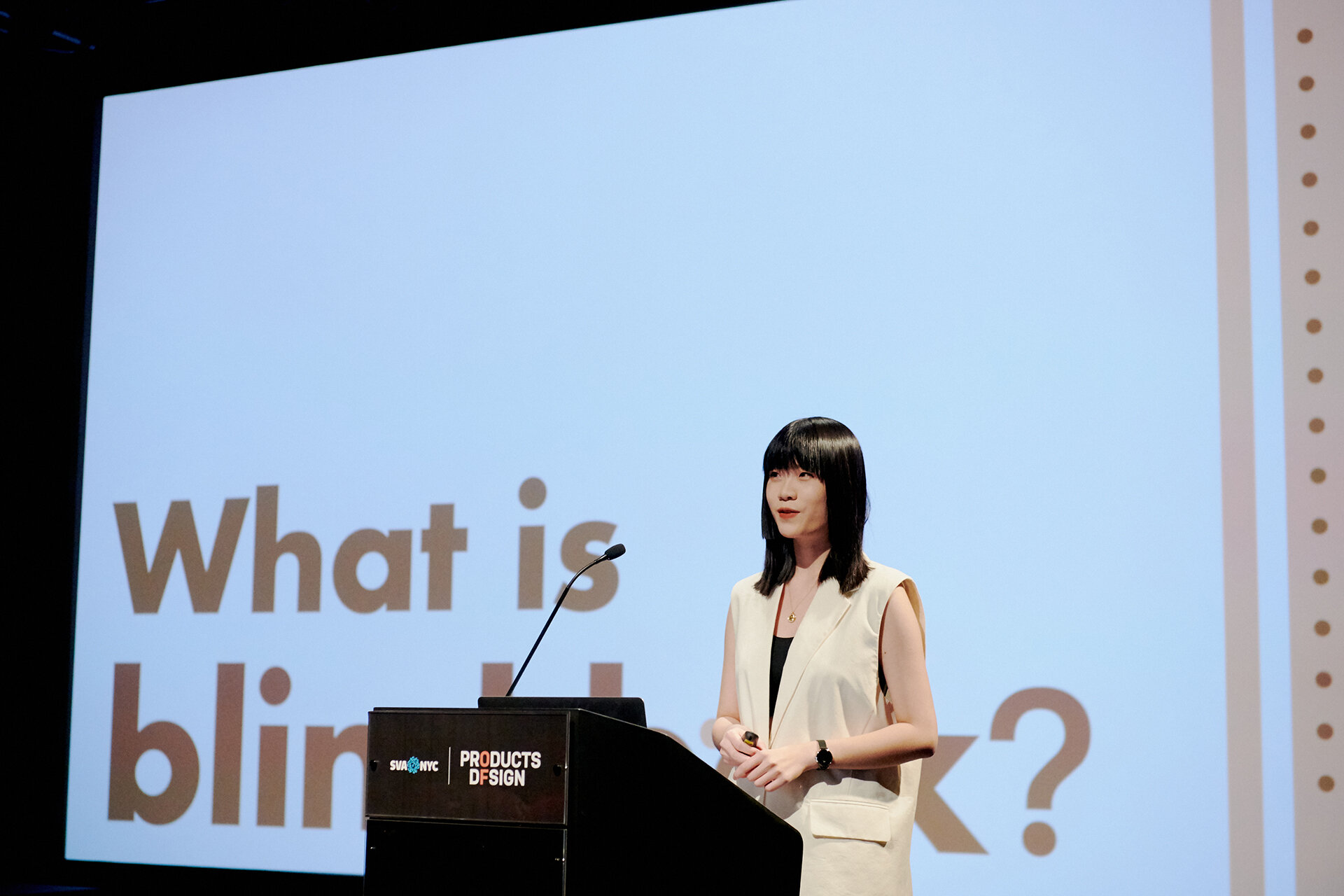
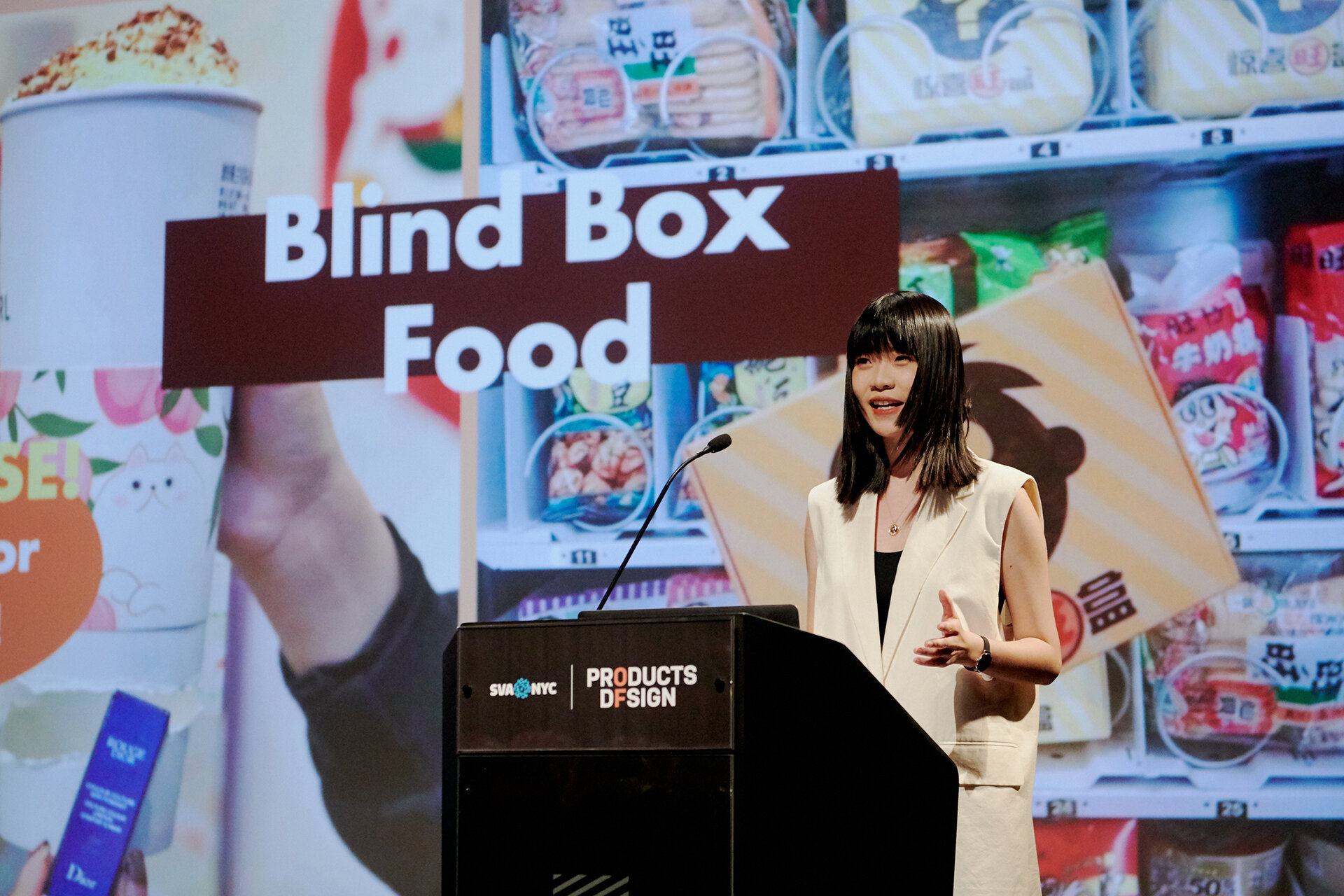
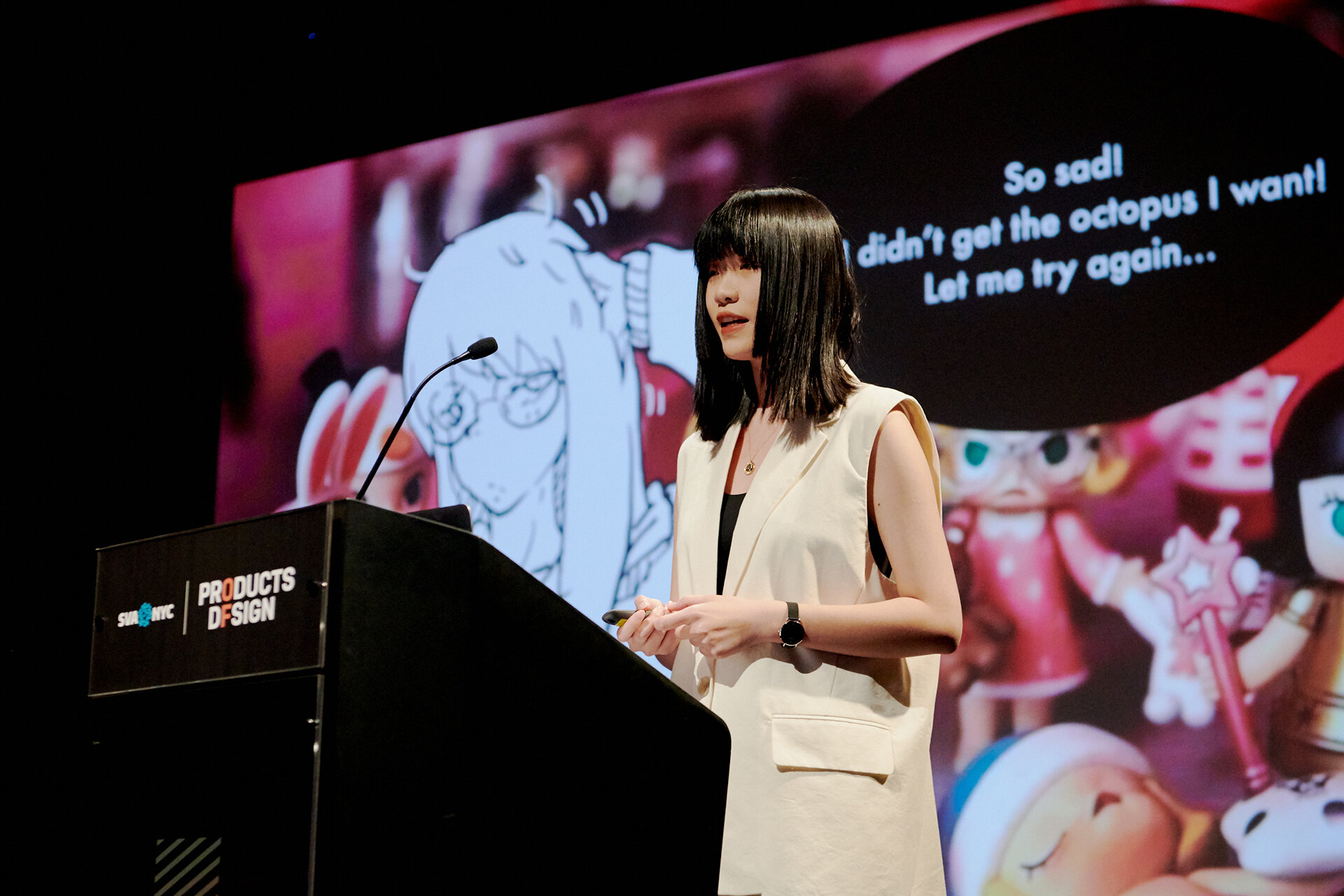
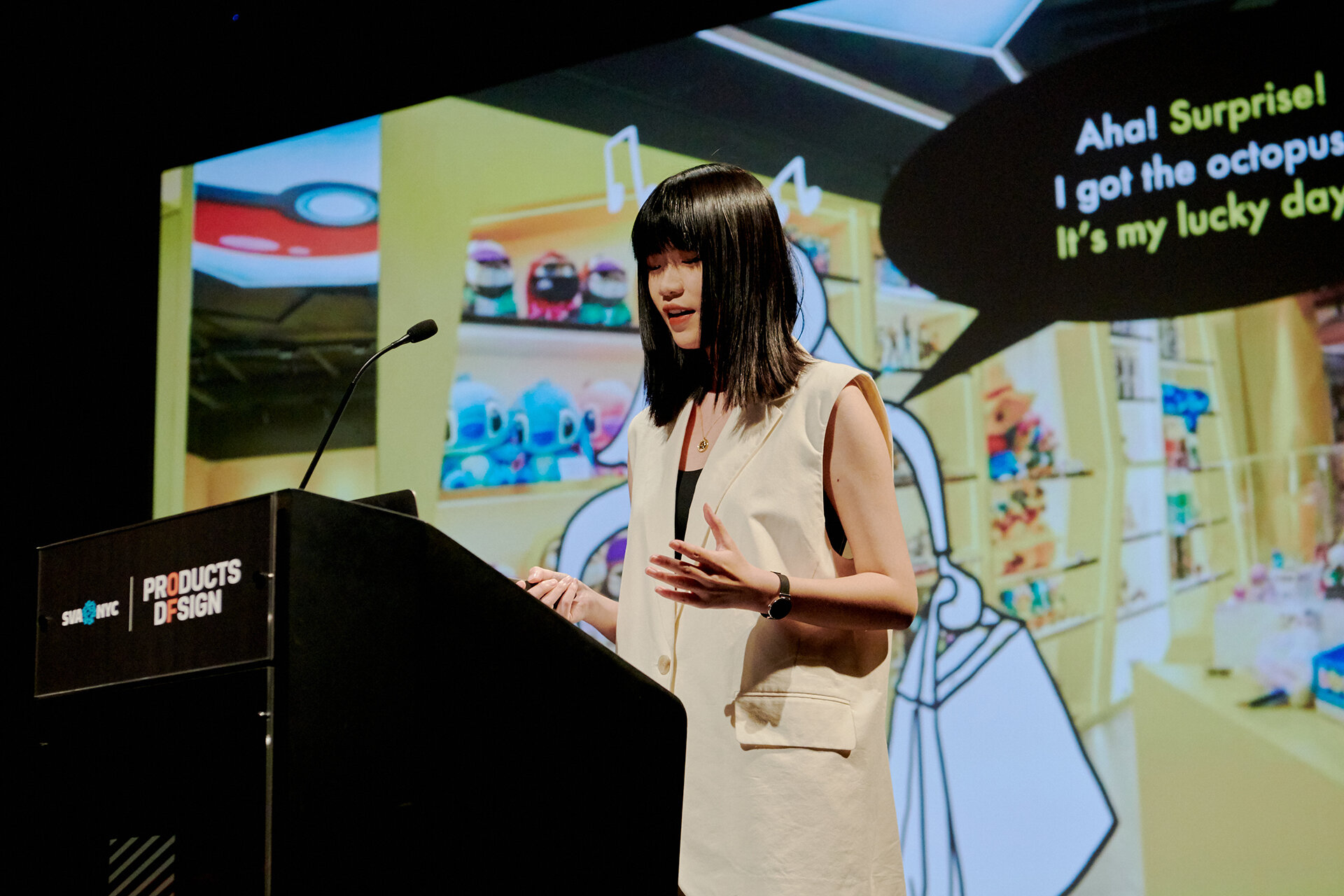

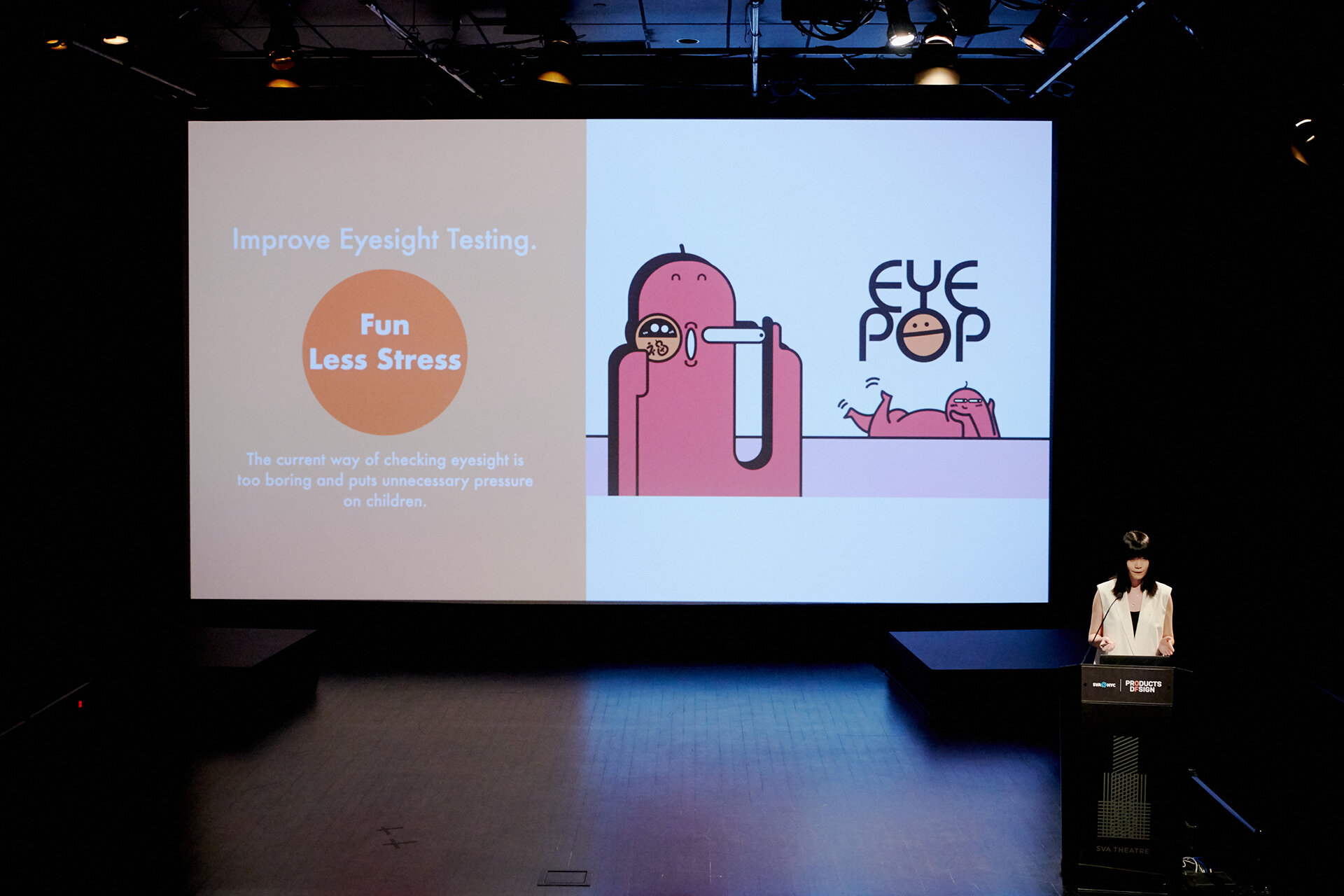
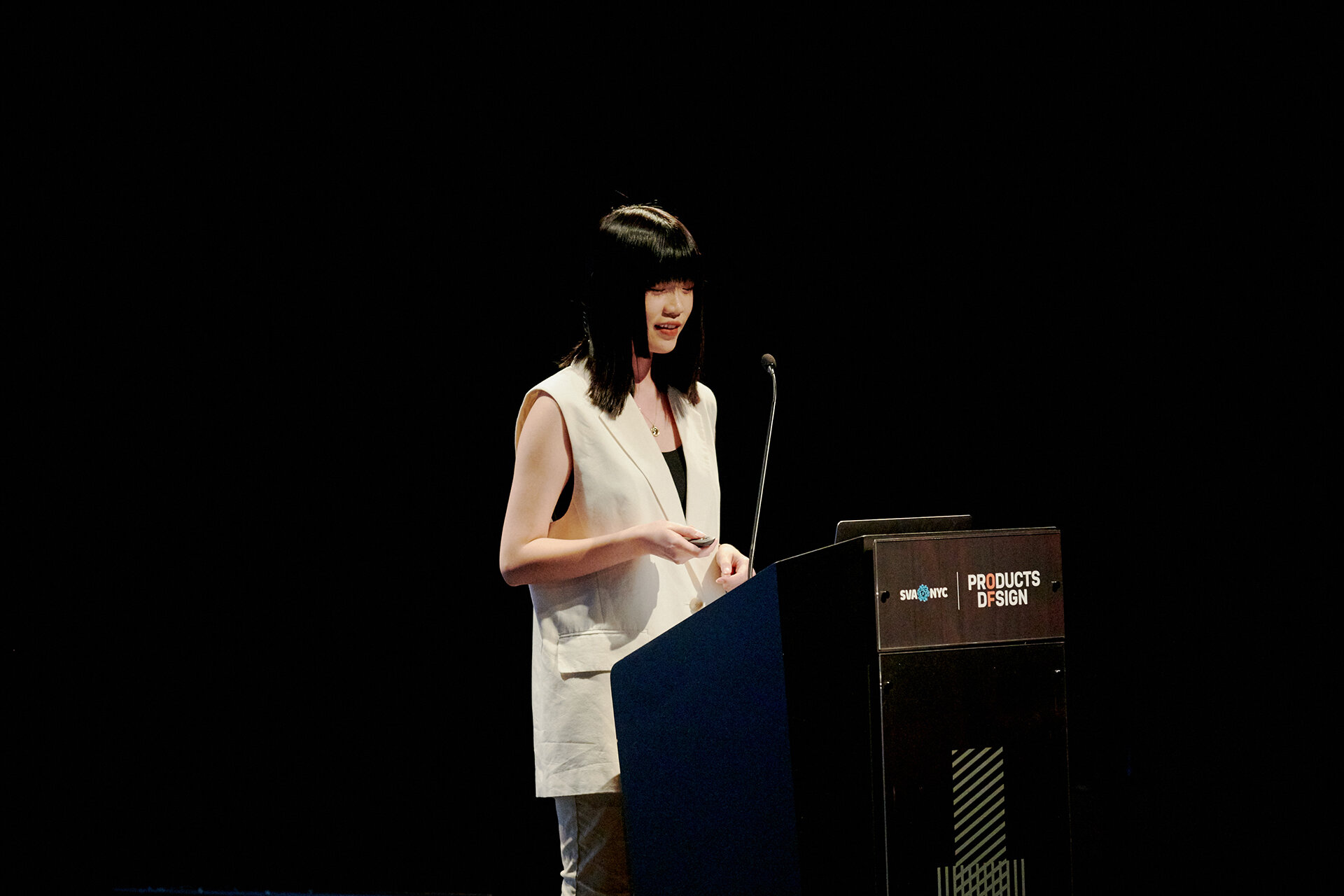


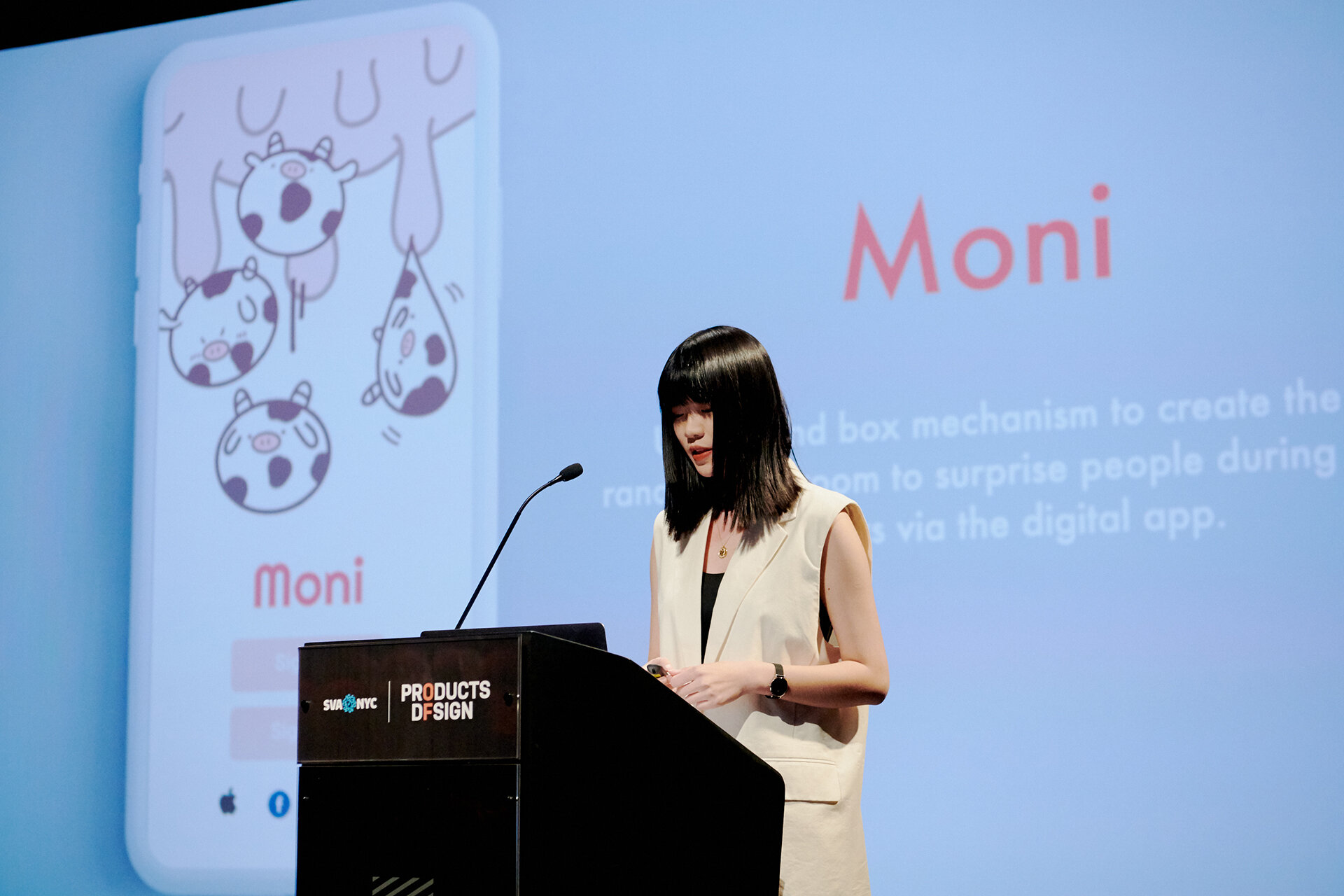
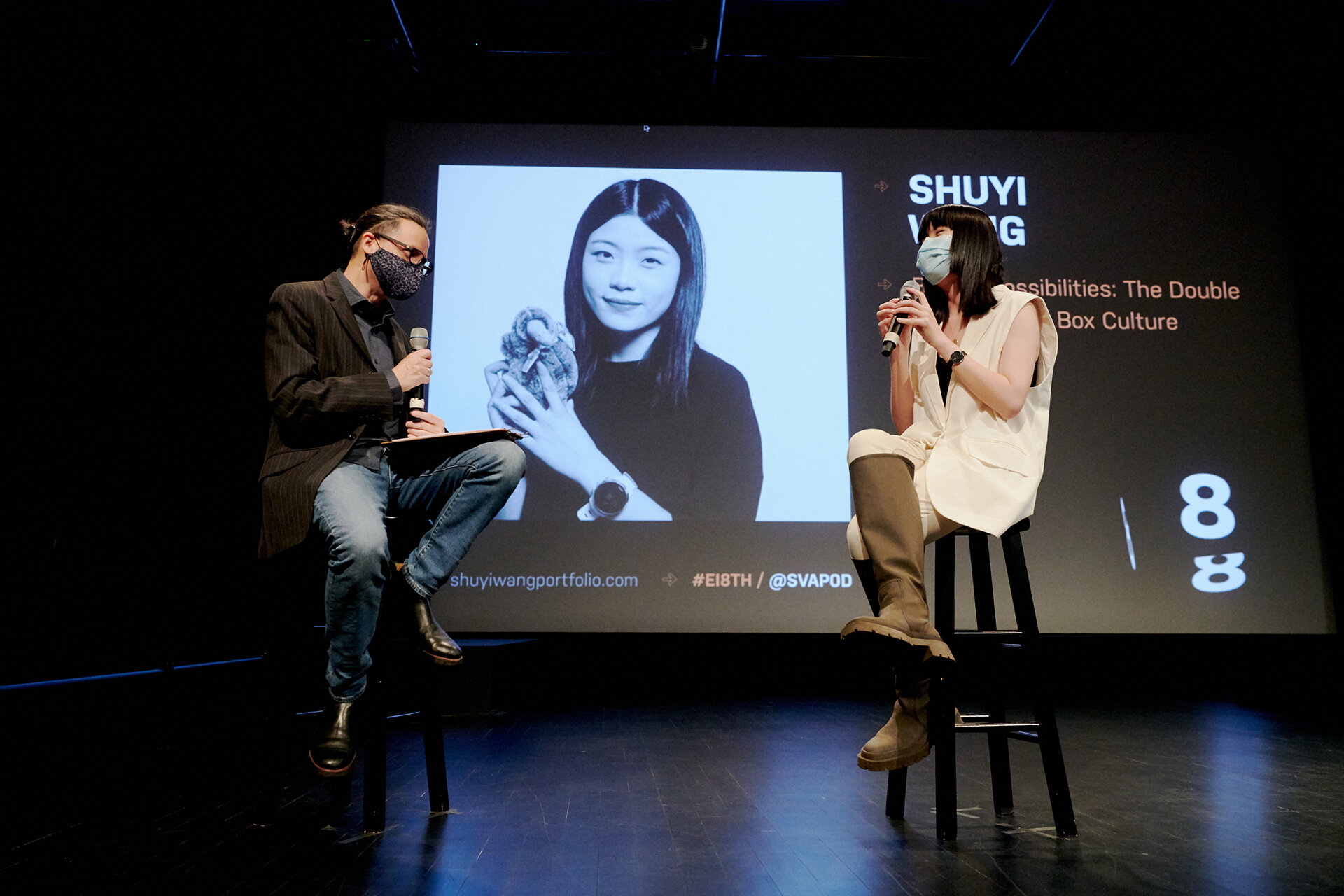
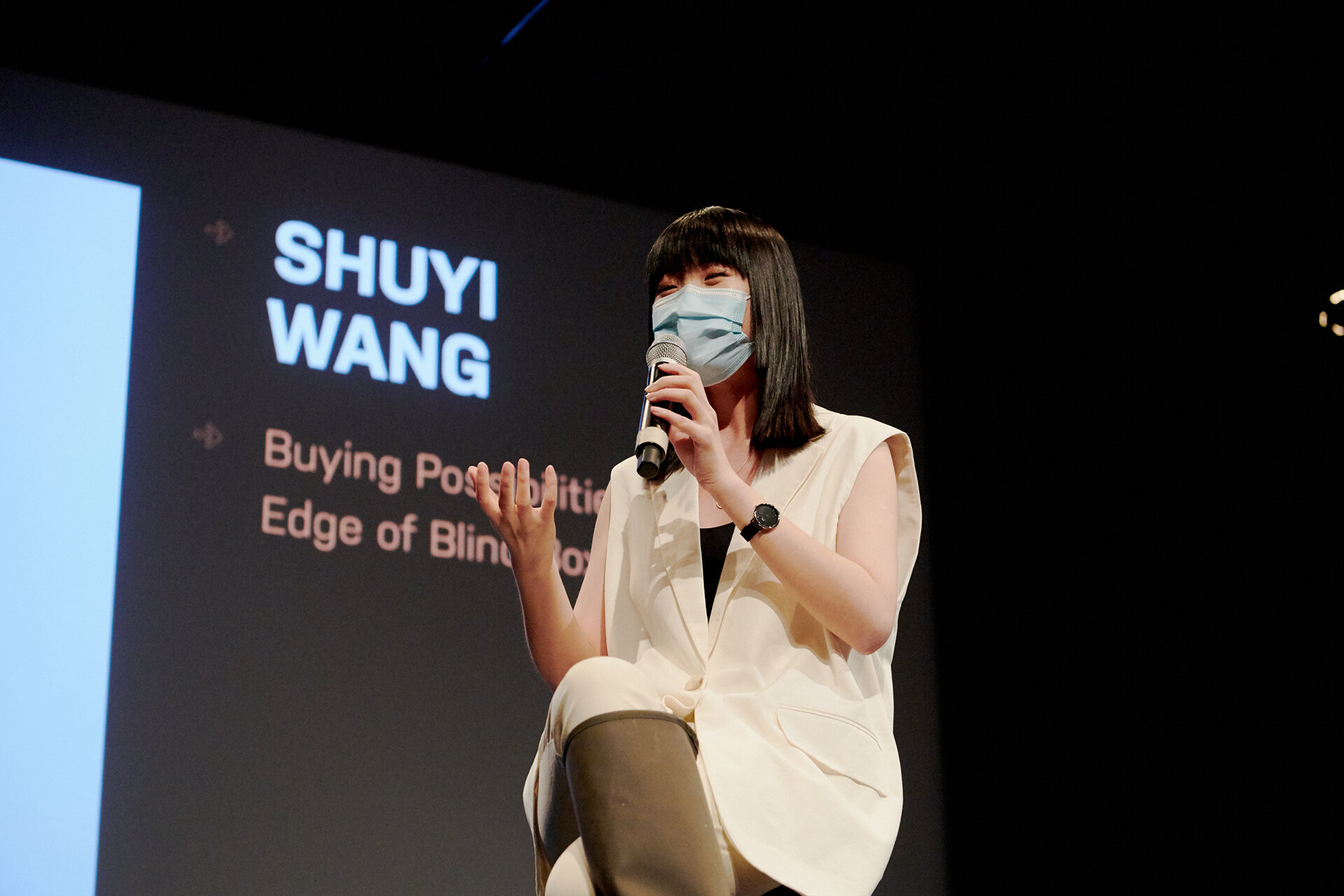
“The blind box mechanism has pros and cons. So how might designers address the ‘negatives’ to help users enjoy all of the wonderful benefits of a system of happy surprises?”
EYEPOP
EYEPOP uses the blind box mechanism to improve compliance with vision tests by creating eye-catching blind boxes with vision test eye patches sealed inside. This is effective because blind boxes can have a positive influence on a buyer’s state of mind, and can motivate people to try new things by encouraging them to step outside of their comfort zones. Importantly, it can also be a good way to motivate kids.
Myopia, or nearsightedness, is a common vision problem that often begins between the ages of six and fourteen. It affects up to 5% of preschoolers, about 9% of school-aged children, and nearly 30% of adolescents. Studies show that the rates of myopia are increasing, which is a surprising and serious problem. EYEPOP aims to improve how kids’ eyesight is tested by making the test less stressful and more fun. To do this, Shuyi incorporates the fun process of picking a blind box into the daunting process of getting a vision test. This fun addition can surprise children and keep them relaxed.
When children enter the store, they first have to pick a blind box eye patch. Any of the following eight figures can appear on the patch, and there is also a hidden surprise. Every child has the opportunity to get a surprise! After putting on the eye patch, the child goes to the vision testing room. The EYEPOP pop-up store also provides blind boxes for vinyl art toys, three-dimensional toys modeled on the figures from the eyepatches. Using the blind box mechanism in this way utilizes both the power of surprise and a straightforward reward system as kid-friendly motivators.
Six Magicians: A Board Game
In order to help people decrease their phone addiction, Shuyi designed a board game called Six Magicians using the blind box mechanism. Board games are an engaging way to help people concentrate while simultaneously bringing them together socially. In Six Magicians, everything about the game revolves around the element of surprise. The game prioritizes the same three core philosophies shared by blind boxes: surprise, luck, and the unknown. By incorporating blind box mechanisms such as randomized pieces, Six Magicians provides a thrill similar to that of opening a box—and, as a result, players will feel less compelled to seek that same thrill on their digital blind boxes: their phones.
Increasingly, people struggle with setting down their phones. In a sense, a mobile phone is a lot like an abstract digital blind box. For example, on Instagram, people constantly refresh to see what new messages, likes, and posts might appear. Because people are naturally curious about what’s going to show up next, every refresh promises the surprise of other people’s posts. But Instagram isn’t the only online portal that offers a blind box experience. Think about the constant update of new stories on sites and platforms like Twitter, or the infinite number of videos available on Youtube and Tiktok.
The constant barrage of news and content, updating unendingly in real-time, is yet another manifestation of how the desire for a steady stream of dopamine-inducing information satisfies users’ desires. The “blind box” addiction to smartphones and that insatiable need to refresh are extremely detrimental to healthy interpersonal communications.
Blind Box Trading
In trying to combat impulsive and obsessive consumption, Shuyi created a way to revalue items with the positive blind box mechanism. She envisioned a service and experience design called Blind Box Trading. This allows users to give items new value by repackaging them into new blind boxes, thereby transforming them into surprises for someone else. It’s a system of blind box gifting to another person rather than to one’s self.
Shuyi found that what makes the blind box mechanism so appealing is also what makes it risky. On one hand, the blind box inspires desire and curiosity. Attracted to the unknown, users follow this natural curiosity by purchasing a box. The discovery of what’s inside generates more curiosity, which leads to more purchases. In the end, users can fall into the trap of impulsive consumption and find themselves buying too many blind boxes, never satisfied.
Although the blind box can lead to positive surprises and a moment of happiness, it can also drive an obsessive person to acquire too many knick-knacks at home. Revaluing items at home was Shuyi’s next goal in an effort to help people who would otherwise allow their collections to take over their lives. Creating one’s own blind box can make a user proud. Furthermore, the act of trading is valuable; it can help curb impulsive buying behavior and nudge users towards more traditional (and less excessive) buying and gifting systems.
Moni
Moni is a digital app that incorporates the blind box mechanism into virtual socializing. Every holiday, a user can log onto Moni to video chat with a randomly selected stranger. The user has no idea who it will be in advance, and waits in eager anticipation. The rush of excitement when the stranger finally pops up onscreen is as jolting as opening a digital blind box. But instead of finding a toy, users make a new friend.
Although the chat pairings are random, Moni takes one variable into account: birthdays. The app matches each user with another user with the same birthdate. This is because, according to psychological studies, 75% of people have more intimacy and share common living habits with partners who have the same birthdate. So even though they’re strangers, they’ll feel a certain connection. Why does Moni only activate during different holidays? Holidays are the easiest time to start a conversation. More and more people have become apprehensive about the work and risk involved in getting to know someone completely new. In everyday life, newly acquainted strangers may not even know how to find a topic to talk about. Holidays provide the best automatic backdrop for an easy conversation starter.
In the case of Moni, a holiday gives these matched strangers something to discuss. It jumpstarts the conversation: After talking about the surprise, they may naturally delve deeper, sharing their feelings toward the holiday, their recollections from past holidays, or any number of topics. In this way, Moni’s blind box suggestions create an automatic ice-breaker for people trying to engage in live conversation. A new variation of this type of blind box trading would allow a person with whom the user is not acquainted to hide in the user’s apartment. This could be a creative way of connecting with new people. As Shuyi says, “blind boxes can actually help people to establish real-life interpersonal connections.”
To learn more about Shuyi Wang’s work, take a look at her projects in more detail at shuyiwangportfolio.com.

